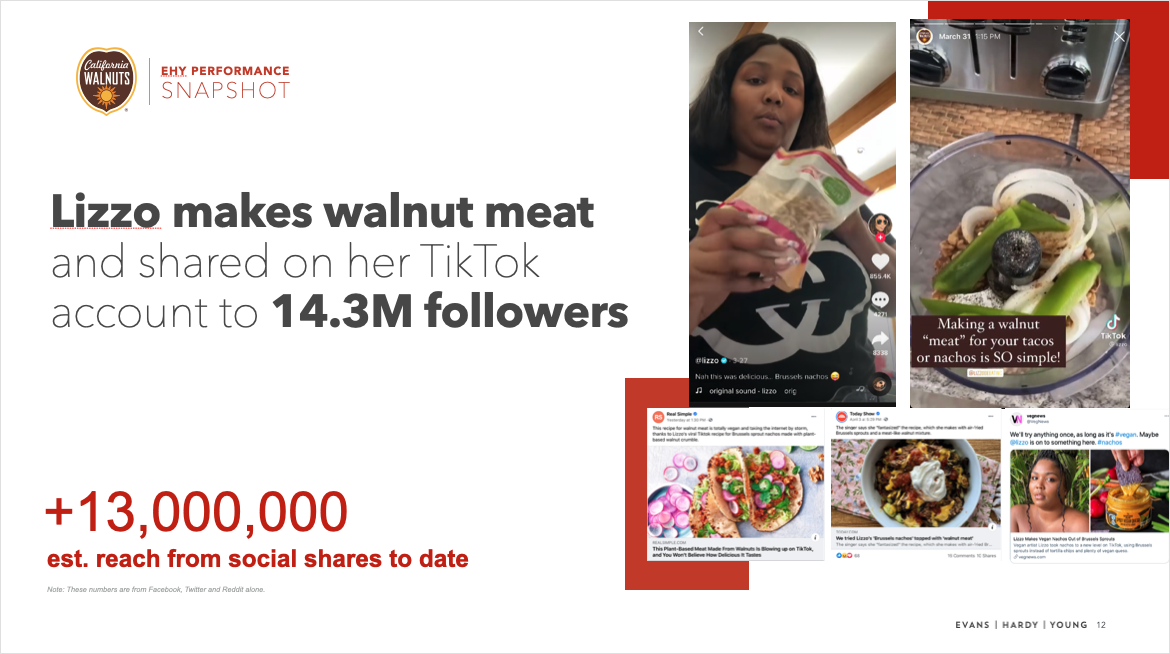
3 Metrics (Besides Sales Data) to Report Campaign Performance
As a marketing director of a commodity board or association, you may not have access to robust retail sales data — or at least not as much as you may like. Your team builds programs to promote the industry at large, so you may only be getting the bird’s eye view of a brand’s performance. And while aggregate data is good, you may be leaving some valuable performance insights on the table. Think more broadly. Connect the dots between your marketing objectives and programs, and their impact on your sales performance.
How to Prove Your Campaigns Are Worth the Spend
Every marketer answers to someone. You need to prove the budget to increase awareness, exposure and ultimately the consumption of your commodity is worth the investment. But it’s not always easy to do. Especially without adequate retail sales data.
Here’s the good news. You can connect a lot of the dots with the data you have. The trick is connecting the right dots in order to see the big picture. Sometimes intangible metrics can fill the gaps and provide vital context to demonstrate effective program performance and positive ROI.
1. Your Website is a Gold Mine of ROI Data if You Set Up Your Analytics
Marketers need to piece together a compelling story for their stakeholders, and even the most sophisticated among us look to our website data for insight. If you feel like your only relevant metrics are website traffic, think again. There’s much more beneath the surface.
You simply just need to set up your analytics for success. Google and Adobe analytics allow users to view custom metrics, audiences, and segments that can reveal who is visiting your website and how they’re using it.
Audiences and Segments
Let’s talk walnuts for a second. When we started working with California Walnuts, most of our audience was 45+ year-olds and already knew the health benefits of walnuts. As the marketing team our “nut to crack” was to shift the prosaic perception of walnuts by creating program initiatives that would entice a younger, more enthusiastic consumers.
To prove ROI, we set up audiences to track engagement from 18-24 year-olds on the website. We then married that data with key campaign periods and immediately noticed a correlation between our marketing efforts and increased conversions among a younger audience. Had we not set up our analytics effectively, our client wouldn’t be able to showcase compelling ROI to stakeholders.
UTM Tracking
Most likely, your traffic isn’t just coming from organic searches but paid ads as well. With UTM tracking, a code is attached to a URL that allows you to identify the source of your clicks and conversions. Make sure you have these codes set up so you can determine which ads are producing results. And which ads need to be tweaked or abandoned. You don’t want your ads to just generate clicks. You want them to generate higher quality engagement (e.g., time on page, bounce rate, form fills).
Train Your Team
When your department invests in Google or Adobe analytics, part of that investment should be to training your team to use them. Without knowledge to utilize the data and optimize customized metrics, you could easily miss out on pivotal insights and opportunities.
2. Social Listening Can Capture Intangible Metrics
Monitoring your brand’s mentions and hashtags on social media is an opportunity to capture positive sentiment and behavioral change around your product. Which demographic mentions you the most? Which geography is bubbling up? Who are the influential people mentioning your brand? To understand where and how your product is discussed, look at topical discourse in addition to what consumers post directly to you.
Social listening proved to be a crucial intangible metric for California Walnuts. As part of our marketing strategy, we designed campaigns that promoted walnuts as a plant-forward ingredient in modern-day diets. Celebrity usage would be a boon, and so we knew we had to keep an ear to the ground.
Imagine our delight when we learned that pop superstar Lizzo posted a video to her TikTok in which she made vegan meat using — you guessed it — walnuts. We jumped on the opportunity to share her video across channels, and integrated it into consumer media pitches. This led to substantial media pick-up, reposts, and shares.

To stay on top of your social listening, have your team proactively monitor product sentiment on social media. Whenever you get a mention, positive or negative, ask yourself: what does it mean? How can I leverage the positive mentions or learn from the negative ones?
3. Define Meaningful Conversions
What constitutes a meaningful conversion may vary, depending on what you’re promoting. For most commodity brands, meaningful conversions usually fall into these categories:
- Email sign-up
- Form fills for gated content
- Recipe page views, prints, shares, and add-to-shopping-list
- Blog or article views/shares
Once again, setting up your analytics to flag these conversions is key. For example, if most of your content provides recipes, measure valuable engagement in that context. It’s one thing to have a visitor click on a recipe. But if they save it, print it, or click-thru to related content, that’s a more meaningful engagement and worthy of factoring into your ROI performance.
Partner With a Food PR and Advertising Agency
Does proving ROI sound complex? It is. But we can simplify it. If you feel uncertain about how to set up your analytics or track intangible metrics, an agency like Evans Hardy + Young can step in. We’re a full-service advertising and PR agency with extensive experience in the food commodities industry. We know how to uncover hidden gems in legacy brands’ sales data and implement strategies that change the conversation around your brand.
Curious how we can revitalize your brand? We’d love to talk!





